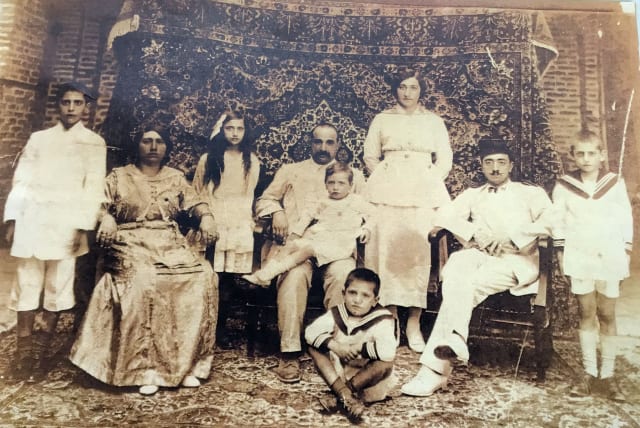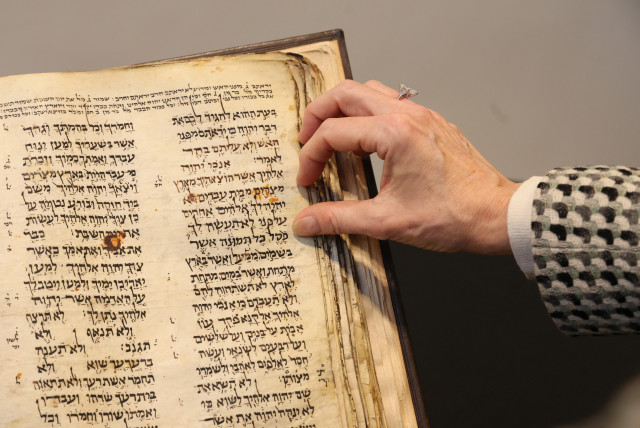The Sassoons are having a moment. Here’s why that matters

The Sassoon family cannot be reduced to a stereotype of wealthy Jewish collectors who assimilated into European culture, nor can they be seen simply as “The Rothschilds of the East.”
The Sassoon family is having a moment. The Baghdadi Jewish dynasty that made its fortune in trade across the Indian subcontinent and East Asia is the subject of the current exhibit at the Jewish Museum in New York, titled “The Sassoons.” Joseph’s Sassoon’s book, “The Global Merchants: The Enterprise and Extravagance of the Sassoon Dynasty,” was published last year. Last month’s highly publicized auction of the Sassoon Codex for over $38 million focused attention on the Sassoon heir who once owned the 1,100-year-old Hebrew Bible. The Sassoon Family Archive at the National Library of Israel has been newly digitized.
The Sassoon dynasty is the epitome of the cosmopolitan transnational Jewish families I retrace in my book “Baghdadi Jewish Networks in the Age of Nationalism”: intrepid merchants who transcended empires, continents and cultures. Starting with David Sassoon (1792-1864), who left Baghdad in 1828, eventually settling in India, the Sassoon empire would, at its height, extend from China to England. The transnational networks they and their contemporaries established, tied together disparate Jewish communities and laid the foundation for present-day philanthropies dedicated to the plight of world Jewry.
The Sassoon family cannot be reduced to a stereotype of wealthy Jewish collectors who assimilated into European culture, nor can they be seen simply as “The Rothschilds of the East” — although they mingled with Rothschilds and held similar riches gained through business. They were their own phenomenon quite apart from the Rothschilds. Too often modern Jewish history is presented from an Ashkenormative (Eurocentric) perspective. Elevating the histories of families like the Sassoons and the communities who benefitted from their philanthropy, highlights the diversity and complexity of the modern Jewish experience.
The Sassoon family's deep connection to the Middle East
The Jewish Museum exhibit is laden with dreamy family portraits by Thomas Gainsborough and John Singer Sargent and the 18th-century European art the family acquired. This might give the mistaken impression that the Sassoons abandoned Baghdad, adopted European social and cultural tastes and never looked back to the Middle East. Fortunately, this visual narrative is balanced by the manuscripts, marriage contracts and Judaica that speak to the family’s deep connections to the Middle East and their Jewishness. “The Sassoons” exhibit, with its comfortable and opulent objects, subtly raises awareness of the diversity of Jewish experience.
The late 19th and 20th century world of the Sassoons is, in short, a gateway to understanding the specifically dynamic transnational Jewish networks of modern Middle Eastern Jewish history. The exhibit offers hints of the Baghdadi heritage of the family and the cosmopolitan religious, business and philanthropic networks in which they participated. Examples include the beautiful silver tikim (Torah cases) and a haftarah scroll, both commissioned by Flora (in Arabic, Farha) Sassoon (1859-1936), who was born in India and later emigrated to England. Flora was admired for both her erudition and business acumen, and her commissions are vivid examples of her religiosity and her concomitant global network: The silver for the tikim was smithed in Shanghai and styled in a Middle Eastern motif; the scrolls were written by a sofer, or scribe, in Baghdad, and the whole Torah was assembled in her hometown of Mumbai. During Flora’s lifetime both Shanghai and Mumbai were important nodes in the Sassoon business empire, and as a result had small but flourishing Baghdadi Jewish communities beyond the Sassoon family itself.
Similarly, the manuscripts on display in the exhibit, many acquired by David Salomon Sassoon (1880-1942), Flora’s son, illustrate the family’s interests in multilingualism and their Jewish material heritage. David collected over 1,000 manuscripts, and many of the rarest pieces in his collection were acquired during his trips back to Iraq. His close connection to the Jewish community in Baghdad despite his birth in Mumbai and adulthood in Britain, his proficiency in Judeo-Arabic (that is, Arabic written in Hebrew script and inflected with Hebrew and Aramaic loan-words) and his fluency in Judeo-Baghdadi (the spoken dialect of Iraqi Jews) enabled the acquisition of these rare and varied manuscripts. While many of the pieces on display seem to speak to the”Europeanness” of the Sassoons, they also underscore that the Sassoons remained a part of Iraqi society, and that these two societies were not mutually exclusive.
The inclusion of a 1946 photograph (by Arthur Rothstein) of Jewish refugees reading a list of Holocaust survivors in the exhibit points to yet another critical role of the Sassoons as important philanthropists for Jewish transnational causes. By 1939 over 20,000 Jews fleeing Europe had found their way to one of the few locations that did not require a visa, Shanghai. Arriving with little means and few, if any, connections, they were welcomed by a well-established Baghdadi Jewish community for whom the Sassoons had been — throughout the 19th and 20th centuries — the primary contributors to Jewish life, endowing schools, synagogues, and charities there as they did across the Baghdadi diaspora and the Middle East itself.
Philanthropy and communal leadership are essential components of the Sassoon legacy, helping us see a broader community beyond the beautiful and durable objects which are easiest for curators to display and which attract visitors for their inherent qualities.
If you happen to be in New York before Aug. 13, visit the exhibit to luxuriate in the wonders of wealth and prestige which the Sassoon family possessed. While you are there, pay special attention to the dual cosmopolitan and communal approach to Jewish history that is exemplified by many of the pieces on display. View the many artifacts and documents as an invitation to explore the global cultural, economic and philanthropic contributions of Middle Eastern Jewry, an enduring and rich legacy of a remarkable family.
The views and opinions expressed in this article are those of the author and do not necessarily reflect the views of JTA or its parent company, 70 Faces Media.
Jerusalem Post Store
`; document.getElementById("linkPremium").innerHTML = cont; var divWithLink = document.getElementById("premium-link"); if (divWithLink !== null && divWithLink !== 'undefined') { divWithLink.style.border = "solid 1px #cb0f3e"; divWithLink.style.textAlign = "center"; divWithLink.style.marginBottom = "15px"; divWithLink.style.marginTop = "15px"; divWithLink.style.width = "100%"; divWithLink.style.backgroundColor = "#122952"; divWithLink.style.color = "#ffffff"; divWithLink.style.lineHeight = "1.5"; } } (function (v, i) { });

